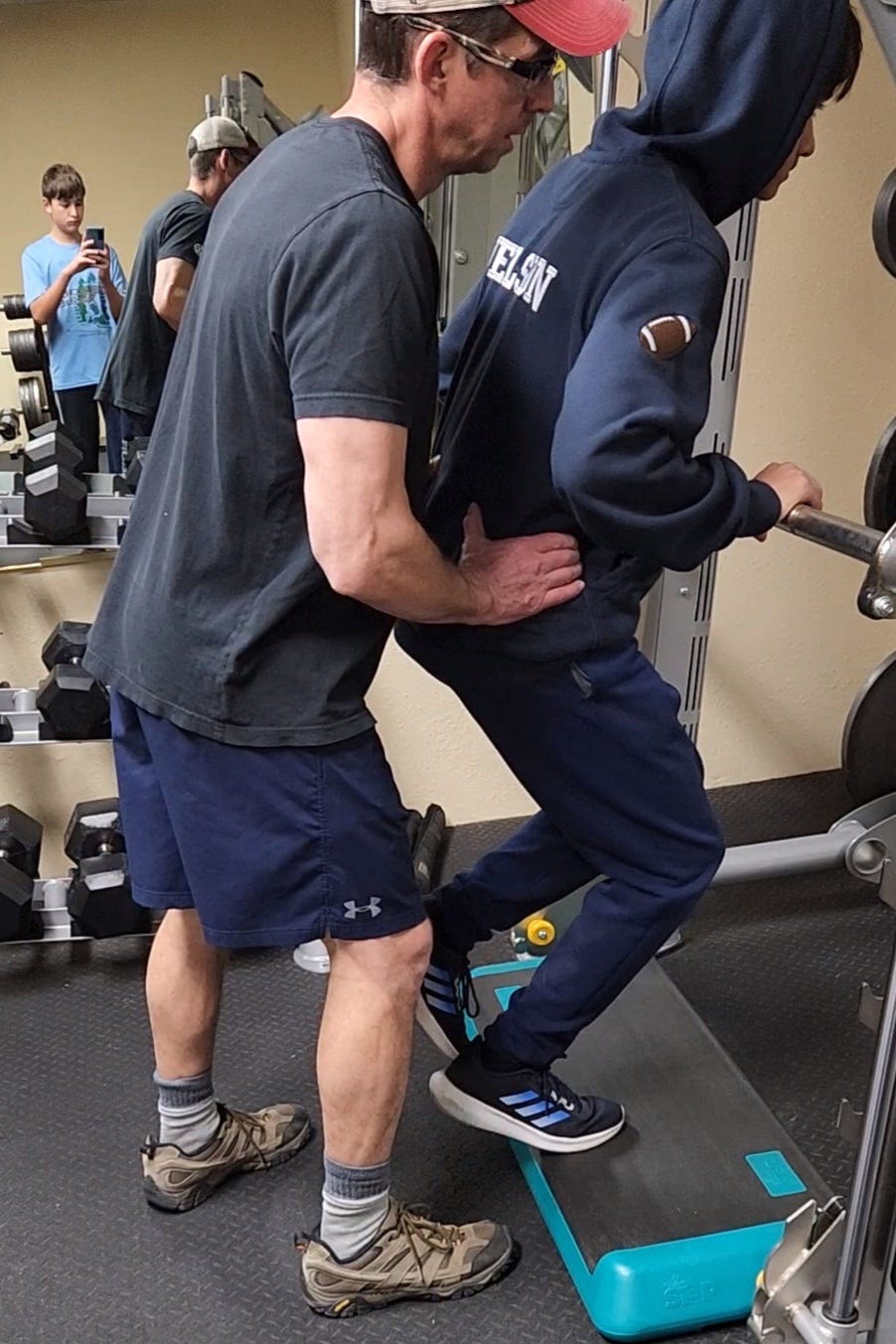This is not medical advice.
I have two teenage boys that are super thrilled that Dad is a strength coach (not). But that’s ok, we’re still gonna try some of theories in the industry.
My oldest son had an ankle sprain in the fall and missed half of his football season. He is fairly strong and fast for his age, yet his feet and ankles have always been the weakest link, and possibly hereditary.
He’s healed now (thanks to Dad!… though mostly time). Winter is a good time to start strengthening for track season.
I don’t want him to get injured again, and I also want to improve his future running performance. His feet are like the tires and suspension in a car. If they aren’t very strong, then traction, agility and speed are going to suffer.
A few years back I read a book called Triphasic Training by Cal Dietz. He is a strength coach for Olympic athletes and for the University of Minnesota.
He makes some strong arguments that some of our strength and conditioning exercises may not reflect what is needed on the track and field.

If we watch an athlete on the field, most of their time is spent pushing of one foot, the ball of the foot, or toes. When an athlete hits the ground running, or changes direction, his foot and ankle will have to be able to handle 5x (or more) the force of their body weight.
A weak ankle will buckle or injure, or simply not be strong enough to be the fastest athlete.
That’s where these ankle isometrics come in. I have him perform the traditional calf strengthening, however, I think these single leg isometrics help reflect a stronger athletic ankle, hopefully less prone to injury.
Here is a 30 second clip,
Video of isometric ankle strengthening
Strengthening and active warm ups may be better for athletic competition.
This article has a 2 minute video of active warm ups (vs passive stretching).






